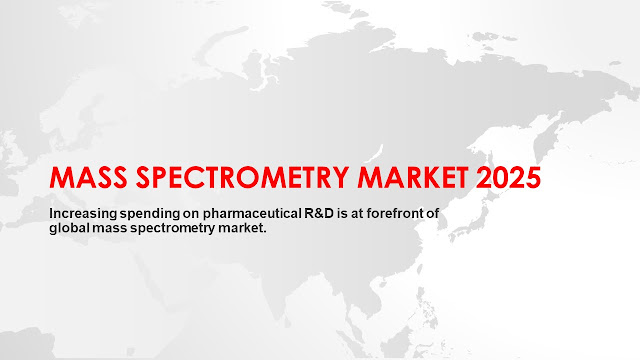3D Cell Culture Market : Increasing Focus on Developing Alternatives to Animal Testing
The scope of the report covers detailed
information regarding the major factors, such as drivers, restraints,
challenges, and opportunities, influencing the growth of the 3d
cell culture market. A detailed analysis of the key industry players has
been done to provide insights into their business overviews; solutions and
services; key strategies; new product launches; mergers; and partnerships,
agreements, and collaborations; and recent developments associated with the
market.
Expected Market Revenue Growth:
The 3D Cell Culture Market is projected to reach USD 1,846 million by 2024 from USD 892 million in
2019, at a CAGR of 15.7%.
Download PDF Brochure:
https://www.marketsandmarkets.com/pdfdownloadNew.asp?id=191072847
Key Factors Driving Market Growth:
The growth in 3D Cell Culture Market is primarily driven by the
increasing focus on developing alternatives to animal testing, growing focus on
personalized medicine, increasing incidence of chronic diseases, and the
availability of funding for research. On the other hand, the lack of
infrastructure for 3D cell-based research and the high cost of cell biology
research are expected to limit market growth during the forecast period.
The cancer & stem cell research segment is
expected to grow at the highest CAGR during the forecast period
Based on application, the 3D cell culture market is
segmented into cancer & stem cell research, drug discovery & toxicology
testing, and tissue engineering & regenerative medicine. The cancer &
stem cell research segment accounted for the largest share of the market in
2018 and is expected to register the highest CAGR during the forecast period.
The increasing prevalence of cancer and significant funding for cancer research
are major factors driving the growth of this application segment.
"Based on end user, the pharmaceutical
& biotechnology companies segment is projected to grow at the highest CAGR
during the forecast period."
Based on end user, the market is segmented into pharmaceutical &
biotechnology companies, research institutes, the cosmetics industry, and other
end users. In 2018, the pharmaceutical & biotechnology companies segment
accounted for the largest share of the 3D Cell Culture Market share. This
segment is also projected to grow at the highest CAGR in the forecast period.
Strong manufacturing and R&D activity in pharmaceutical & biotechnology
companies, the increasing R&D expenditure, and growing focus on
alternatives to animal testing models are the key factors driving the growth of
this segment.
"North America dominates
the global 3D Cell Culture Market."
Based on region, the Cancer Therapeutics Market is segmented into North America, Europe, Asia Pacific, and
the Rest of the World (RoW). In 2018, North America commanded the largest
share of the market. The increasing incidence of cancer and the presence of a
well-established pharmaceutical & biotechnology industry are some of the
key factors supporting the growth of the North American market.
The 3D Cell Culture Market is marked by the presence of several big and small
players. Some of the prominent players offering 3D cell culture products
include Thermo Fisher Scientific (US), Corning Incorporated (US), Merck KGaA (Germany), Lonza AG
(Switzerland),
REPROCELL Incorporated (Japan),
TissUse (Germany),
InSphero (Switzerland),
Synthecon (US), 3D Biotek (US), CN Bio (UK), Hamilton Company (US), MIMETAS (Netherlands),
Emulate (US), HìREL Corporation (US), QGel SA (Switzerland), SynVivo (US), Advanced
BioMatrix (US), Greiner Bio-One International (Austria), and PromoCell (Germany).
Request For Sample Pages:
https://www.marketsandmarkets.com/requestsampleNew.asp?id=191072847
These players adopted various growth strategies, such as product launches
& upgrades, expansions, acquisitions, partnerships, agreements, and
collaborations to further expand their presence in the Cancer Therapeutics
Market.
Thermo Fisher Scientific dominated the 3D cell culture market in
2018. The company’s leading position can be attributed to its strong brand
image and robust product portfolio. The company has a strong foothold in the
market with its established brand AlgiMatrix. The company focuses on R&D
activities and product launches to further strengthen its position in the
market. In 2018, the company invested USD 967 million in R&D activities. It
also adopts organic and inorganic growth strategies such as expansions and
acquisitions in order to maintain its position in Cancer Therapeutics
Market.




Comments
Post a Comment